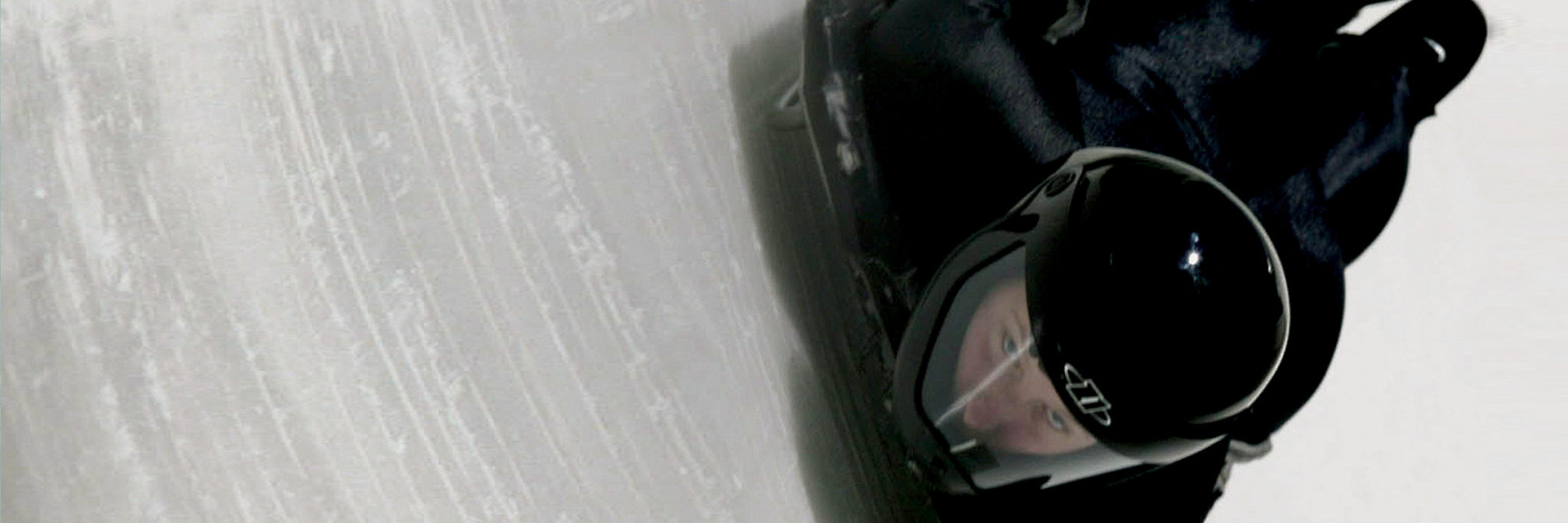High upon a snow-capped mountain in the Austrian Alps, a thinly-clad Keslie Tomlinson barrels downhill headfirst, traveling in excess of 75 miles an hour with only inches of sharpened steel separating her from the ice below. A parachuting helmet protects her face from windburn as she leans to maneuver the slick turns on the brakeless apparatus. In less than a minute, the 1400-meter downhill trek will be over.
For the second consecutive winter, the Denison field hockey and lacrosse veteran took the track as a member of the American skeleton team, which competes in the face-forward version of the luge. “It’s an awesome rush,” she said. “You feel like you’re flying down the whole track.” The sport gets its name from the barebones sled competitors use. Tomlinson feels the skeleton is actually safer than the other events on the track, the traditional luge and the bobsled, although the possibility of a bad turn is always in the back of her mind.
Coming into the October team trials, Tomlinson was simply hoping to improve upon last year’s performance, when she ranked 13th in the nation. She finished in eighth place at this year’s trials to claim the final spot on the Europa Cup team, which competes in four tournaments in Austria and Germany this winter. The top four “sliders” made the World Cup team and will compete in the 2006 Olympics, while the ninth through 14th ranked sliders earned America’s Cup team spots. Tomlinson finished the Europa Cup third among the Americans and seventh overall.
Tomlinson built up her resumé on the America’s Cup circuit last year, competing in the U.S. and Canada. “Skeleton’s really a sport of experience,” she said. “It’s such a unique, extreme sport; it takes time to learn.” Her first brush with skeleton racing came while she was interning for the U.S. Olympic Committee her junior year at Denison, doing media work at the 2002 Salt Lake City Games. After seeing skeleton for the first time, her thoughts gradually changed from “those people are crazy” to “I could do that, that would be fun.” At 21, she embraced the voice inside telling her to climb the biggest hill around and zip down it. She attended a week-long camp during winter break her senior year, and began training full-time after graduation.
During the summer, she conditions and earns money to “support her winter habit.” Because only the World Cup team receives national funding, she has to pay to play, finding her own sponsors and using money earned waiting tables in Washington, D.C. Her ultimate goal is to compete in the Olympics someday. In the meantime, she hopes to improve every year and was again working with the media at the 2006 Games, in Turin, Italy.
Lea Ann Parsley, the Granville slider who won a silver medal at the 2002 Games, said she looks forward to following Tomlinson’s success. “She is so enthusiastic and fun to be around, which can be a real blessing in such a competitive environment,” she said. The next Winter Olympics will take place in Vancouver in 2010. If all goes according to plan, Tomlinson will not be doing media work there.

